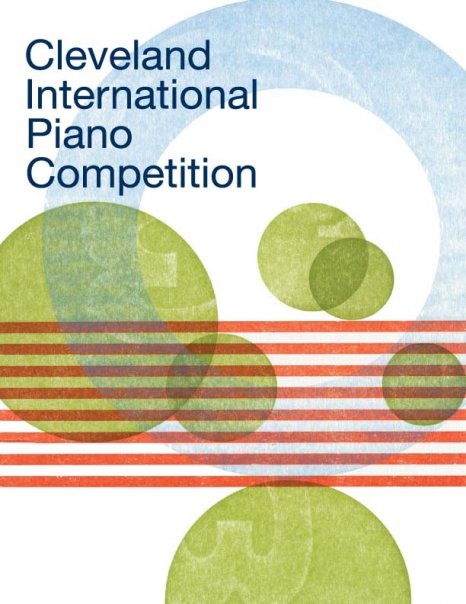by Daniel Hathaway
Cleveland, OH — July 31, 2011
Second impressions lifted a few of this afternoon’s contestants higher — in our humble opinion.

Mr. Andrew Tyson (24, USA) gave us his contemporary piece first: Takemitsu’s Rain Tree Sketch (1982). His metallic sonorities were expertly voiced from highest to lowest, from loudest to softest, and the climax of the piece was big and resonant. He held the end in silence so long that once again this afternoon the audience got the signal that they should sit on their hands. After a moment, Mr. Tyson plunged into Schumann’s Symphonic Etudes, op. 13, a performance that included the five variations published after the composer’s death. His playing here was thoughtful, if somewhat academic. In the course of the various movements, his fingers flew fleetly through fast passages, he pounded out important bass notes, he produced great, dry staccato chords and pulled off complicated cross-hand manuevers, all the while demonstrating good pedaling technique. On the whole, his performance was conceived on a larger scale than really suits Schumann’s music. And Mr. Tyson’s habit of mugging at the camera (and at the audience) became intrusive as the long work unfolded.
Bach and Chopin were the afternoon’s choices by Ms. Eunae Lee (23, Korea), who began with a straightforward, sensitive reading of the g minor Prelude from WCT I. The fugue was surprisingly uneventful. Her big work was Chopin’s Sonata No. 3 in b minor, which she played with more fluency than musical insight. Her technique served her well in producing clear lines and nicely voiced chords, though her tone was consistently dark throughout. Everything was quite beautiful within a small musical frame.
Ms. Anna Volovitch (28, Russia) began with Beethoven’s cheerful Sonata in E-flat, op. 31, no. 3. She achieved a clean, humorous line in the first movement, with good phrasing and nicely organized scale passages with well-placed accents. In the second movement, she set up a crisp, staccato bass line whose tempo never flagged. She neatly placed chords repeated at the octave in the third and made good dynamic and color contrasts. The finale (which gives the piece its nickname, “The Hunt”), was spirited and jolly. After Saturday evening’s session, it was fine to hear a whole piece played in tempo with only subtle bending of the beat for expressive purposes. Ms. Volovitch then turned to Sir Michael Tippett’s Sonata No. 2 (1962), a work of its era that alternates between overt dissonance and melancholy lyricism. She began with a clear declamation of the striking opening gesture, made good mood changes in the quiet sections, pedalled the material effectively, and ended the work atmospherically with vanishing chords and high, single notes. We did wonder why she devoted so much stage time to such a work, which seems dated and can be annoyingly repetitious. Overall, Ms. Volovitch significantly improved on her first round performance this afternoon.
It was Christmas in July for Mr. Eric Zuber (26, USA), who began his set with George Crumb’s curiosity, A Little Suite for Christmas (1980). Nice, glassy — or perhaps icy — chords and clusters, tinkling in various octaves and a toccata which vanishes several times into harmonic resonance thanks to the sostenuto pedal just about sums up the content of Crumb’s work (that and several instances in which Mr. Zuber reached into the strings to damp a note or two). He is good with percussive sounds, and pulled the piece off handily. All of Chopin’s Twelve Etudes, op. 10 were next on Mr. Zuber’s list, and his splendid technique predestined him to make something impressive out of the whole dozen, individually and collectively. Nos. 3, 4, 5 and 8 were the standouts, but his grand approach to the whole set served him well.
Next up in Sunday night’s fourth session: Mr. Pavel GIntov, Ms. Jeewon Lee, Mr. Alexey Chernov and Mr. Denis Evstuhin.



